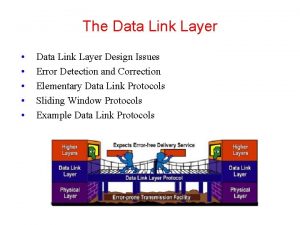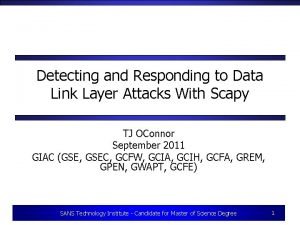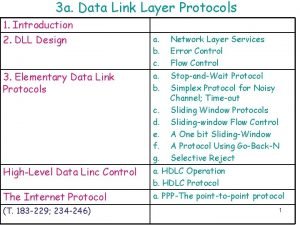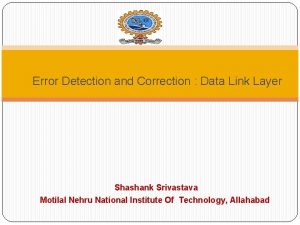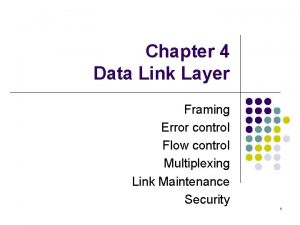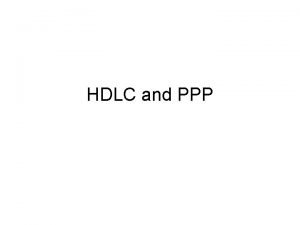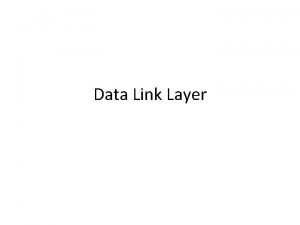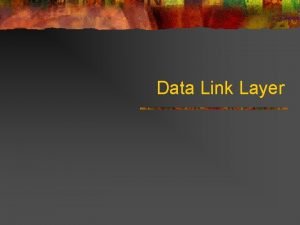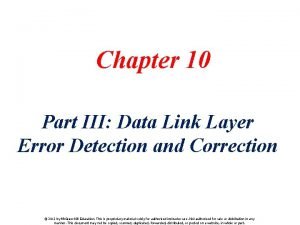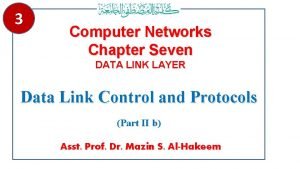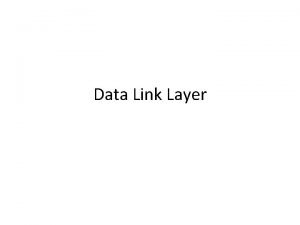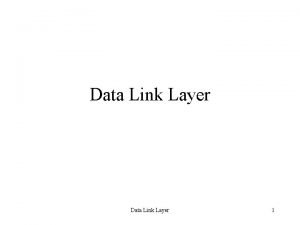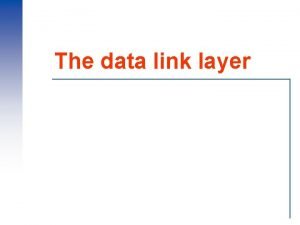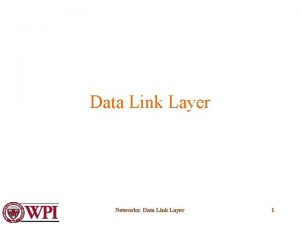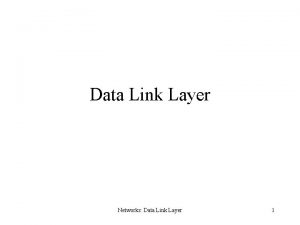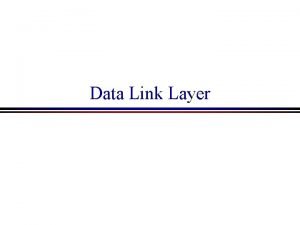Chapter 3 The Data Link Layer Data Link














- Slides: 14

Chapter 3 The Data Link Layer

Data Link Layer Design Issues • • Services Provided to the Network Layer Framing Error Control Flow Control

Functions of the Data Link Layer • • • Provide service interface to the network layer Dealing with transmission errors Regulating data flow • Slow receivers not swamped by fast senders

Functions of the Data Link Layer (2) Relationship between packets and frames.

Framing A character stream. (a) Without errors. (b) With one error.

Error Detection and Correction • Error-Correcting Codes • Error-Detecting Codes

Sliding Window Protocols • A One-Bit Sliding Window Protocol • A Protocol Using Go Back N • A Protocol Using Selective Repeat

Buffering on Sender and Receiver a) Sender needs to buffer data so that if data is lost, it can be resent Receiver needs to buffer data so that if data is received out of order, it can be held until all packets are received b) – c) Flow control How can we prevent sender overflowing receiver’s buffer? – d) Receiver tells sender its buffer size during connection setup How can we insure reliability in pipelined transmissions? – Go-Back-N • • – Send all N un. ACKed packets when a loss is signaled Inefficient Selective repeat • • Only send specifically un. ACKed packets A bit trickier to implement

Stop-and-Wait Process Sender a) b) c) d) Receiver Sender doesn’t send next packet until he’s sure receiver has last packet The packet/Ack sequence enables reliability Sequence numbers help avoid problem of duplicate packets Problem: keeping the pipe full

Stop & wait sequence numbers Sender Receiver Sender ACK 0 Timeout Fram e 0 0 ACK Timeout e 0 Timeout Fram Receiver Fram e 0 ACK 0 Fram e 0 0 ACK Sender Receiver Fram e 0 ACK 0 Fram e 1 ACK 1 Fram e 0 (c) (d) ACK 0 (e) 1. Simple sequence numbers enable the client to discard duplicate copies of the same frame 2. Stop & wait allows one outstanding frame, requires two distinct sequence numbers

Solution: Pipelining via Sliding Window Allow multiple outstanding (un-ACKed) frames Upper bound on un-ACKed frames, called window Receiver … … Sender Time a) b)

Sliding Window Protocols A sliding window of size 1, with a 3 -bit sequence number. (a) Initially. (b) After the first frame has been sent. (c) After the first frame has been received. (d) After the first acknowledgement has been received.

A Protocol Using Go Back N Pipelining and error recovery. Effect on an error when (a) Receiver’s window size is 1. (b) Receiver’s window size is large.

A Sliding Window Protocol Using Selective Repeat (a) Initial situation with a window size seven. (b) After seven frames sent and received, but not acknowledged. (c) Initial situation with a window size of four. (d) After four frames sent and received, but not acknowledged.
 Data link layer design issues
Data link layer design issues Materi data link layer
Materi data link layer Data link layer attacks
Data link layer attacks Protokol data link layer
Protokol data link layer Data link layer switching
Data link layer switching Data link layer protocols
Data link layer protocols Utopian simplex protocol
Utopian simplex protocol Error detection and correction in data link layer
Error detection and correction in data link layer Unacknowledged connectionless service
Unacknowledged connectionless service Data link layer framing
Data link layer framing Data link layer in hdlc in computer networks
Data link layer in hdlc in computer networks Data link layer
Data link layer Issues of data link layer
Issues of data link layer Error detection methods in data link layer
Error detection methods in data link layer Data link layer protocols for noisy and noiseless channels
Data link layer protocols for noisy and noiseless channels
